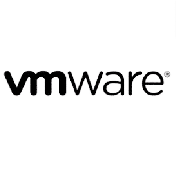Seminarinhalt
Am Ende des Trainings sollten Sie in der Lage sein, die folgenden Ziele zu erreichen:
- Beschreiben Sie vSAN-Konzepte
- Detaillierte Beschreibung der vSAN-Architektur und -Komponenten
- Erklären Sie die wichtigsten Funktionen und Anwendungsfälle für vSAN
- Identifizieren von Anforderungen und Planungsüberlegungen für vSAN-Cluster
- Erläutern der Bedeutung der Hardwarekompatibilität von vSAN-Knoten
- Beschreiben der verschiedenen vSAN-Bereitstellungsoptionen
- Erläutern, wie vSAN-Fault-Domains konfiguriert werden
- Detaillierte Beschreibung der Definition und Erstellung einer VM-Speicherrichtlinie
- Erläutern Sie die Auswirkungen von Änderungen der vSAN-Speicherrichtlinien
- Detaillierte Angaben zu vSAN-Ausfallsicherheit und Datenverfügbarkeit
- Beschreiben Sie die vSAN-Speicherplatzeffizienz
- Erläutern Sie die Funktionsweise der vSAN-Verschlüsselung
- Erläuterung der VMware HCI Mesh™-Technologie und -Architektur
- Detaillierte Beschreibung der Architektur und Konfiguration von vSAN File Service
- Beschreiben Sie die Einrichtung eines gestreckten und eines Zwei-Knoten-vSAN-Clusters
- Beschreiben des vSAN-Wartungsmodus und der Optionen zur Datenevakuierung
- Definieren Sie die Schritte zum Herunterfahren eines vSAN-Clusters für die Wartung
- Erläutern, wie proaktive Tests zur Überprüfung der Integrität eines vSAN-Clusters eingesetzt werden können
- Verwendung von VMware Skyline Health™ zur Überwachung des vSAN-Zustands
- Verwendung von VMware Skyline Health zur Untersuchung und Bestimmung von Fehlerbedingungen
- Besprechung von Best Practices zur vSAN-Fehlerbehebung
- Beschreiben der vSAN Express Storage Architecture™-Konzepte
Programm
- Introduction and course logistics
- Course objectives
- Describe vSAN architecture
- Describe the vSAN software components: CLOM, DOM, LSOM, CMMDS, and RDT
- Identify vSAN objects and components
- Describe the advantages of object-based storage
- Describe the difference between All-Flash and Hybrid vSAN architecture
- Explain the key features and use cases for vSAN
- Discuss the vSAN integration and compatibility with other VMware technologies
- Identify requirements and planning considerations for vSAN clusters
- Apply vSAN cluster planning and deployment best practices
- Determine and plan for storage consumption by data growth and failure tolerance
- Design vSAN hosts for operational needs
- Identify vSAN networking features and requirements
- Describe ways of controlling traffic in a vSAN environment
- Recognize best practices for vSAN network configurations
- Recognize the importance of hardware compatibility
- Ensure the compatibility of driver and firmware versioning
- Use tools to automate driver validation and installation
- Apply host hardware settings for optimum performance
- Use VMware vSphere® Lifecycle ManagerTM to perform upgrades
- Deploy and configure a vSAN Cluster using the Cluster QuickStart wizard
- Manually configure a vSAN Cluster using VMware vSphere® Client™
- Explain and configure vSAN fault domains
- Using VMware vSphere® High Availability with vSAN
- Understand vSAN Cluster maintenance capabilities
- Describe the difference between implicit and explicit fault domains
- Create explicit fault domains
- Describe a vSAN object
- Describe how objects are split into components
- Explain the purpose of witness components
- Explain how vSAN stores large objects
- View object and component placement on the vSAN datastore
- Explain how storage policies work with vSAN
- Define and create a virtual machine storage policy
- Apply and modify virtual machine storage policies
- Change virtual machine storage policies dynamically
- Identify virtual machine storage policy compliance status
- Describe and configure the Object Repair Timer advanced option
- Plan disk replacement in a vSAN cluster
- Plan maintenance tasks to avoid vSAN object failures
- Recognize the importance of managing snapshot utilization in a vSAN cluster
- Discuss deduplication and compression techniques
- Understand deduplication and compression overhead
- Discuss compression only mode
- Configure erasure coding
- Configure swap object thin provisioning
- Discuss reclaiming storage space with SCSI UNMAP
- Configure TRIM/UNMAP
- Identify differences between VM encryption and vSAN encryption
- Perform ongoing operations to maintain data security
- Describe the workflow of data-in transit encryption
- Identify the steps involved in replacing Key Management Server
- Understand the purpose of vSAN HCI Mesh
- Detail vSAN HCI Mesh technology and architecture
- Perform mount and unmount of a remote datastore
- Understand the purpose of vSAN File Services
- Detail vSAN File Services architecture
- Configure vSAN File Shares
- Describe vSAN iSCSI Target Service
- Describe the architecture and uses case for stretched clusters
- Detail the deployment and replacement of a vSAN witness node
- Describe the architecture and uses case for two-node clusters
- Explain storage policies for vSAN stretched cluster
- Perform typical vSAN maintenance operations
- Describe vSAN maintenance modes and data evacuation options
- Assess the impact on cluster objects of entering maintenance mode
- Determine the specific data actions required after exiting maintenance mode
- Define the steps to shut down and reboot hosts and vSAN clusters
- Use best practices for boot devices • Replace vSAN nodes
- Describe how the Customer Experience Improvement Program (CEIP) enables VMware to improve products and services
- Use VMware Skyline Health for monitoring vSAN cluster health
- Manage alerts, alarms, and notifications related to vSAN in VMware vSphere® Client™
- Create and configure custom alarms to trigger vSAN health issues
- Use IOInsight metrics for monitoring vSAN performance
- Use a vSAN proactive test to detect and diagnose cluster issues
- Use a structured approach to solve configuration and operational problems
- Apply troubleshooting methodology to logically diagnose faults and optimize troubleshooting efficiency
- Use VMware Skyline Health to investigate and help determine failure conditions
- Explain which log files are useful for vSAN troubleshooting
- Understand the purpose of vSAN Express Storage Architecture
- Describe the vSAN Express Storage Architecture components
- Identify Storage Policy differences
- Understand compression and encryption operation differences
Zielgruppen
Vorkenntnisse
- VMware vSphere: Installieren, Konfigurieren, Verwalten




War ein sehr guter Kurs. :)
VMware vSAN: Install, Configure, Manage [V8]
16.06.2025War ein sehr guter Kurs. :)
— Johannes A.